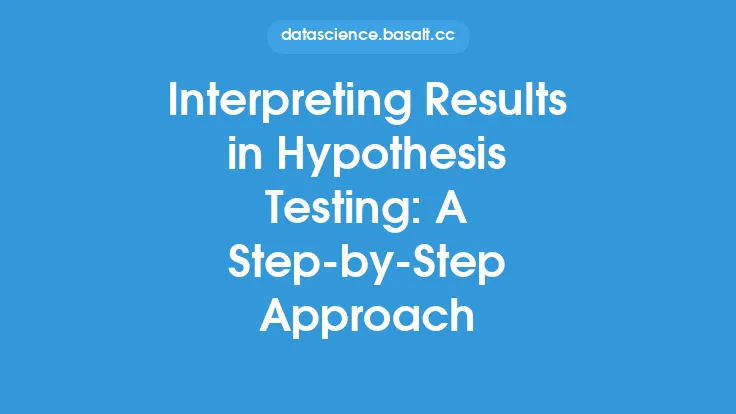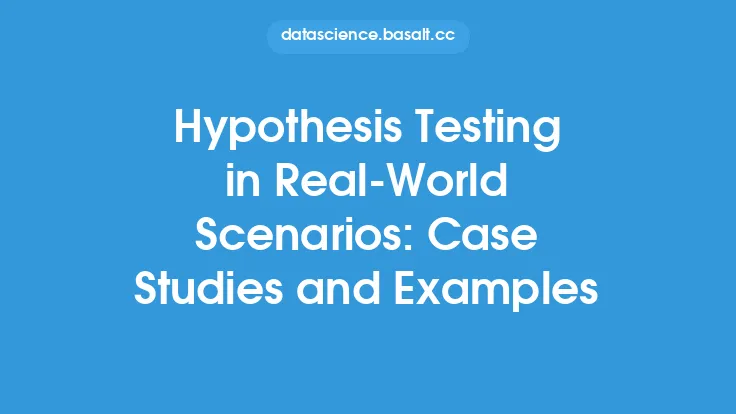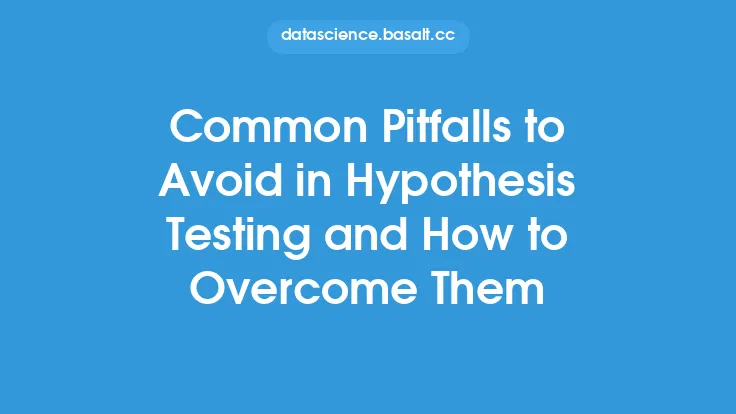In the realm of statistical analysis, hypothesis testing is a crucial concept that enables researchers to make informed decisions based on data. At the heart of hypothesis testing lies the p-value, a statistical measure that has been widely used and sometimes misused. The p-value is a fundamental concept in statistics, and understanding its role in hypothesis testing is essential for any researcher or data analyst. In this article, we will delve into the world of p-values, exploring their definition, calculation, interpretation, and limitations.
Introduction to P-Values
A p-value, or probability value, is a numerical measure that represents the probability of observing a result as extreme or more extreme than the one observed, assuming that the null hypothesis is true. The null hypothesis is a statement of no effect or no difference, and it is used as a baseline for testing. The p-value is calculated using the test statistic and the sampling distribution of the test statistic under the null hypothesis. The p-value is a probability between 0 and 1, where a small p-value indicates that the observed result is unlikely to occur by chance, assuming that the null hypothesis is true.
Calculation of P-Values
The calculation of p-values depends on the type of test being performed. For example, in a t-test, the p-value is calculated using the t-statistic and the degrees of freedom. The t-statistic is calculated as the difference between the sample mean and the population mean, divided by the standard error of the sample mean. The p-value is then calculated using a t-distribution with the given degrees of freedom. In a chi-squared test, the p-value is calculated using the chi-squared statistic and the degrees of freedom. The chi-squared statistic is calculated as the sum of the squared differences between the observed frequencies and the expected frequencies, divided by the expected frequencies.
Interpretation of P-Values
The interpretation of p-values is crucial in hypothesis testing. A small p-value indicates that the observed result is unlikely to occur by chance, assuming that the null hypothesis is true. This leads to the rejection of the null hypothesis in favor of the alternative hypothesis. The alternative hypothesis is a statement of an effect or a difference, and it is the hypothesis that the researcher is trying to establish. The p-value does not indicate the probability that the null hypothesis is true or false; rather, it indicates the probability of observing a result as extreme or more extreme than the one observed, assuming that the null hypothesis is true.
Limitations of P-Values
While p-values are widely used in hypothesis testing, they have several limitations. One of the main limitations is that p-values do not indicate the size or importance of the effect. A small p-value may indicate a statistically significant result, but it does not necessarily indicate a practically significant result. Another limitation is that p-values are sensitive to sample size. A large sample size can result in a small p-value, even if the effect size is small. Additionally, p-values do not take into account the research question or the context of the study. They are simply a statistical measure that indicates the probability of observing a result as extreme or more extreme than the one observed.
Common Misconceptions About P-Values
There are several common misconceptions about p-values. One of the most common misconceptions is that a p-value indicates the probability that the null hypothesis is true or false. This is not the case; rather, the p-value indicates the probability of observing a result as extreme or more extreme than the one observed, assuming that the null hypothesis is true. Another misconception is that a p-value of 0.05 is a magical threshold that indicates statistical significance. While 0.05 is a commonly used threshold, it is arbitrary and does not necessarily indicate practical significance.
The Role of P-Values in Hypothesis Testing
P-values play a crucial role in hypothesis testing. They provide a statistical measure that indicates the probability of observing a result as extreme or more extreme than the one observed, assuming that the null hypothesis is true. This enables researchers to make informed decisions about whether to reject the null hypothesis in favor of the alternative hypothesis. However, p-values should not be used in isolation; rather, they should be used in conjunction with other statistical measures, such as effect size and confidence intervals.
Best Practices for Using P-Values
There are several best practices for using p-values in hypothesis testing. One of the most important best practices is to use p-values in conjunction with other statistical measures, such as effect size and confidence intervals. This provides a more complete picture of the results and enables researchers to make more informed decisions. Another best practice is to avoid using p-values as a sole criterion for determining statistical significance. Rather, researchers should use a combination of statistical measures to determine whether a result is statistically significant and practically significant.
Conclusion
In conclusion, p-values are a fundamental concept in statistics, and understanding their role in hypothesis testing is essential for any researcher or data analyst. While p-values have several limitations, they provide a statistical measure that indicates the probability of observing a result as extreme or more extreme than the one observed, assuming that the null hypothesis is true. By using p-values in conjunction with other statistical measures and avoiding common misconceptions, researchers can make more informed decisions and draw more accurate conclusions from their data.





